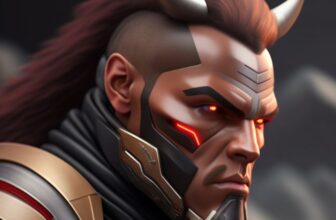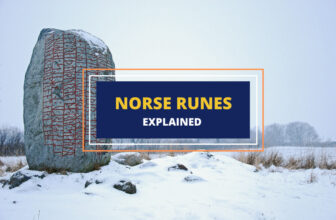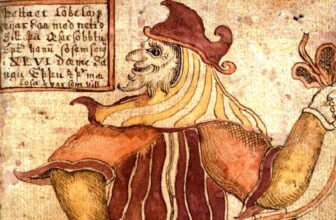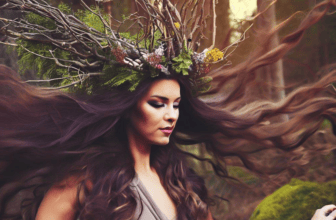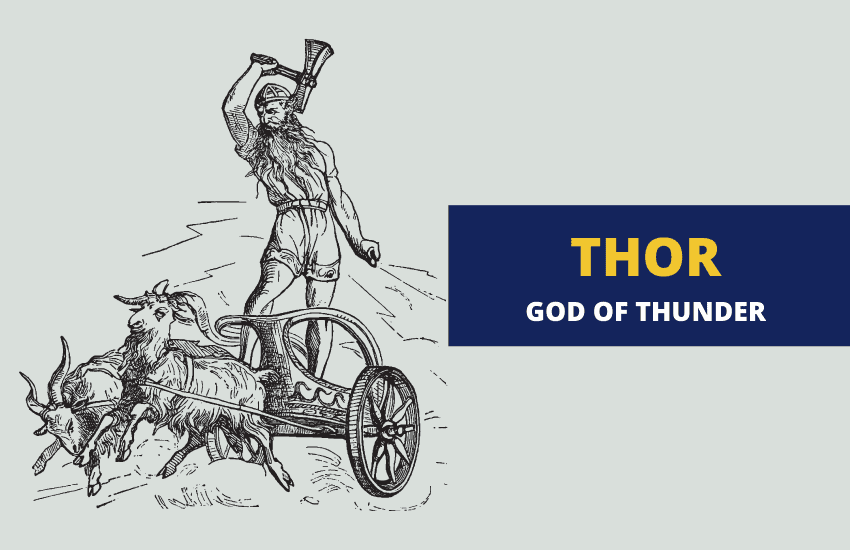
Table of Contents
Thor is one of the most iconic deities not just in the Norse pantheon but across all ancient human religions. Primarily known as a god of strength and thunder, Thor is probably the most widely revered, worshipped, and beloved deity throughout most ages in Germanic and Nordic cultures. Unlike his father, Odin, who was primarily worshipped as a patron of the ruler caste in Norse societies, Thor was a god for all Norse people – kings, warriors, Vikings, and farmers alike.
Who is Thor?
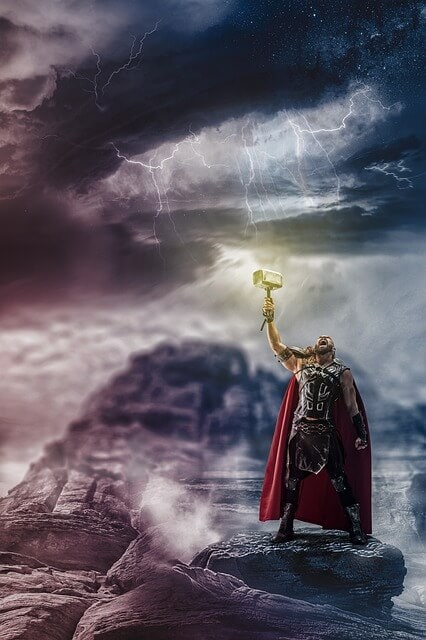
A son of the god Odin and the giantess and Earth goddess Jörð, Thor is the most famous son of the wise Allfather. He was also called Donar among the Germanic people. Thor wasn’t Odin’s only son, as the Allfather had several male children. In fact, Thor isn’t even Odin’s “favorite” son in Norse mythology – that title belonged to Baldur who met a tragic death before the fated Ragnarok.
Even if Thor wasn’t Odin’s favorite, however, he was certainly the favorite god of the ancient Norse and Germanic people. He was worshipped and beloved by almost everyone in Northern Europe, from kings to farmhands. Amulets shaped as his hammer Mjolnir were even used as fertility and good luck charms at weddings.
The God of Thunder and Strength
Thor is best-known today as a god of thunder and lightning. Every thunderstorm and even every light rain was attributed to him. During dry periods, people offered animal sacrifices to Thor, in hopes that he would send rain.
Thor was also the god of strength in the Norse pantheon. He was well-established as the most physically strong god in Asgard and many of his myths examined that quality in detail. He’s described as a muscular, towering figure with exceptional physical strength.
Thor also wears the famous magical belt Megingjörð which further doubles his already impressive strength.
The Role Model of Every Nordic Warrior
Thor was viewed as a model of bravery and courage. He was the stout defender of Asgard against the forces of giants, jötnar, and monsters. Even though he was technically three-quarters a giant himself, as his mother Jörð was a giantess and Odin was half-god and half-giant, Thor’s loyalty’s were undivided and he would defend Asgard and Midgard (Earth) against anything that tried to harm his people.
So, while Norse and Germanic warriors yelled Odin’s name when they ran into battle and invoked Týr’s name when they spoke of honor and justice in war, they all spoke of Thor when they described the “perfect” warrior.
Mjolnir – Thor’s Hammer
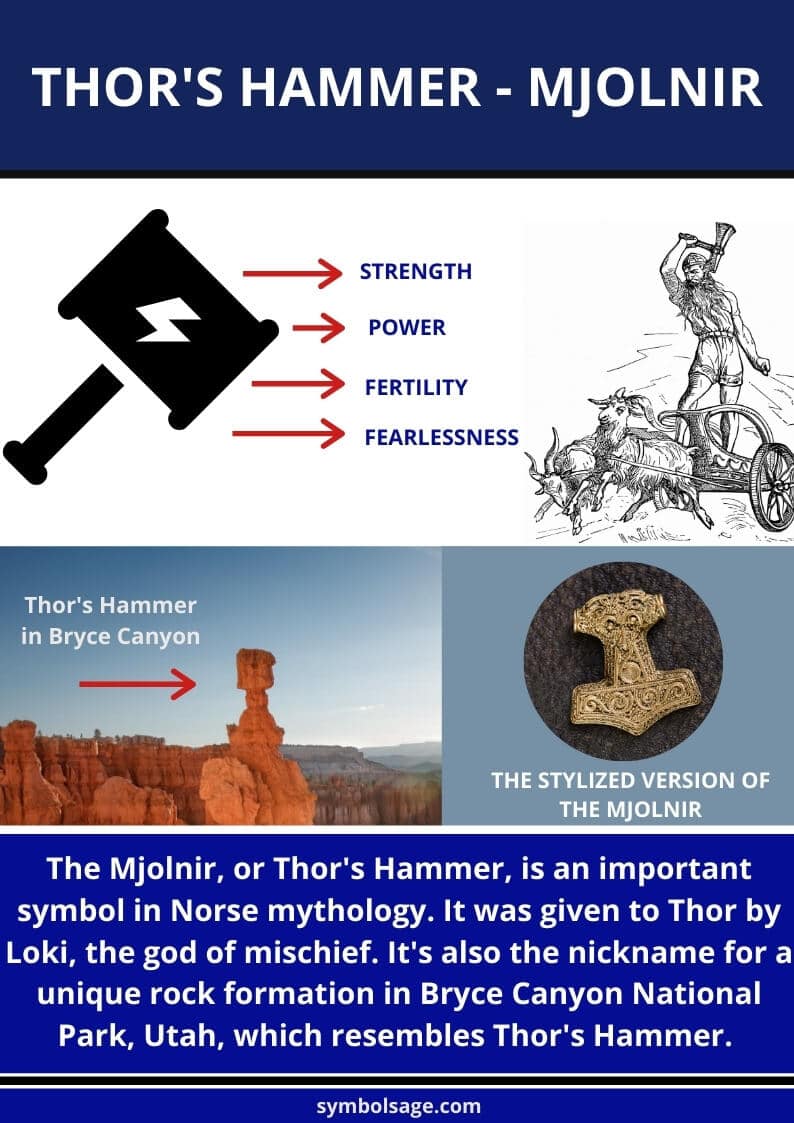
The most famous item and weapon associated with Thor is the hammer Mjolnir. The powerful hammer has become a stuff of legends with Mjolnir amulets and trinkets made to this day.
According to most translations from Proto-Germanic, Mjolnir means the Crusher or the Grinder, while some translations from Proto-Indo-European languages translate the name as thunder weapon or lightning. According to the legend, Mjolnir was given to Thor by none other but his uncle – the trickster god Loki.
The story begins with Loki cutting off the long golden hair of Thor’s wife, the goddess Sif while she was sleeping. Thor was furious at Loki’s disrespect and audacity that he demanded Loki found an equally beautiful golden wig for Sif or Loki would face Thor’s wrath.
Left with no choice, Loki traveled to the dwarven realm of Svartalfheim to find dwarves who could fashion such a wig. He then came across the Sons of Ivaldi dwarves, known for their expert craftsmanship. He commissioned them to fashion the perfect golden wig for Sif there.
While in the land of the dwarves, Loki also found the deadliest spear Gungnir and the golden ring Draupnir which he later gave to Odin, the fastest ship Skidblandir and the golden boar Gullinbursti which he gave to Freyr, and last but not least – the hammer Mjolnir which he gave to Thor to satiate his anger.
The legend details how Loki kept bothering the dwarven blacksmiths Sindri and Brokkr while they worked on Thor’s hammer in order to make the weapon faulty. The two dwarves were such experts, however, that the only “fault” Loki managed to force them into was Mjolnir’s short handle, which made it difficult to lift the hammer. However, Thor’s strength made it possible for him to weild the hammer easily.
Thor and Jörmungandr

There are several key myths about Thor and Jörmungandr in Nordic folklore, best described in the Prose Edda and Poetic Edda. According to the most popular myths, there are three critical meetings between Jörmungandr and Thor.
1- Thor’s Strength is Tested
In one myth, the giant king Útgarða-Loki tried to trick Thor by using magic to disguise the giant World Serpent Jörmungandr as a cat. Jörmungandr was so big that its body circled around the world. Nevertheless, Thor was successfully fooled by the magic and Útgarða-Loki challenged him to lift the “kitten” from the ground. Thor pushed himself as much as he could and managed to lift one of the “cat’s paws” off the ground before giving up.
Even though Thor technically failed the challenge, Útgarða-Loki was so impressed by the feat that he confessed to the god, admitted that Thor was the most powerful god in existence, and added that had Thor managed to lift Jörmungandr off the ground, he would’ve altered the boundaries of the universe.
2- Thor’s Fishing Trip
The second meeting between Thor and Jörmungandr was much more significant, occurring during a fishing trip that Thor and Hymir took. Hymir refused to give Thor any bait, so Thor improvised by cutting off the head of the largest ox he could find and using it as bait.
When they began to fish, Thor sailed out further into the sea, although Hymir protested against this. As they began fishing, Jörmungandr took Thor’s bait. Struggling, Thor managed to pull the serpent’s head out of the water with blood and poison spewing from the monster’s mouth. Thor lifted his hammer to kill the serpent, but Hymir was afraid that this would initiate Ragnarok, so he quickly cut the line and freed the giant serpent.
In older Scandinavian folklore, the ending of this meeting is different – Thor slays Jörmungandr. However, as the Ragnarok myth became the official version across most Nordic and Germanic lands, the legend change to Hymir freeing Jörmungandr.
Had Thor managed to slay the serpent, Jörmungandr wouldn’t have been able to grow larger and encompass the entire Midgard “Earth-realm” and Rangarok may not have occured. This story reinforces the Norse belief that destiny is inevitable.
3- Thor’s Death
Like most Norse gods, Thor is destined to meet his end during Ragnarok – the final battle that will end the world as we know it in Norse mythology. During this battle, he will meet Jörmungandr for the last time. During their final battle, the god of thunder will manage to slay the dragon first, but he will die from Jörmungandr’s venom just moments later.
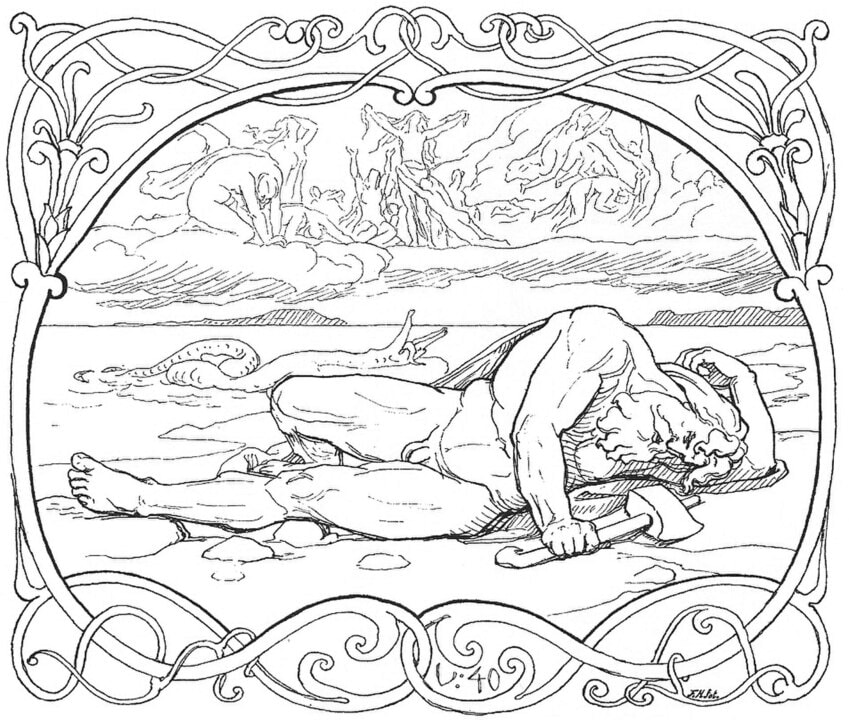
Thor’s Connection to Fertility and Farming
Curiously enough, Thor was not just a god of thunder and strength – he was also a god of fertility and farming. The reason is pretty simple – as a god of thunderstorms and rain, Thor was an important part of the cycle of harvests.
Thor was loved and worshipped by everyone who had to work the land for a living. What’s more, Thor’s wife, the goddess Sif was a goddess of the Earth just like Thor’s mother Jörð. Her long golden hair was often associated with fields of golden wheat.
The symbolism behind the divine couple is obvious – the sky god Thor impregnates the earth goddess Sif with rain and bountiful harvests follow. For this reason, the thunder god was worshipped as a god of fertility and farming. Even his hammer Mjolnir was viewed as a symbol of fertility and good luck.
What Does Thor Symbolize?
As a god of thunder, rain, the sky, strength, fertility, and farming, and a model of male courage, bravery, and selfless sacrifice, Thor symbolized several important concepts held in high-esteem by the Nordic and Germanic peoples. That’s likely why he was widely worshipped and loved – from warriors and kings who valued bravery and strength to farmers who just wanted to plow their lands and feed their families.
Thor’s Symbols
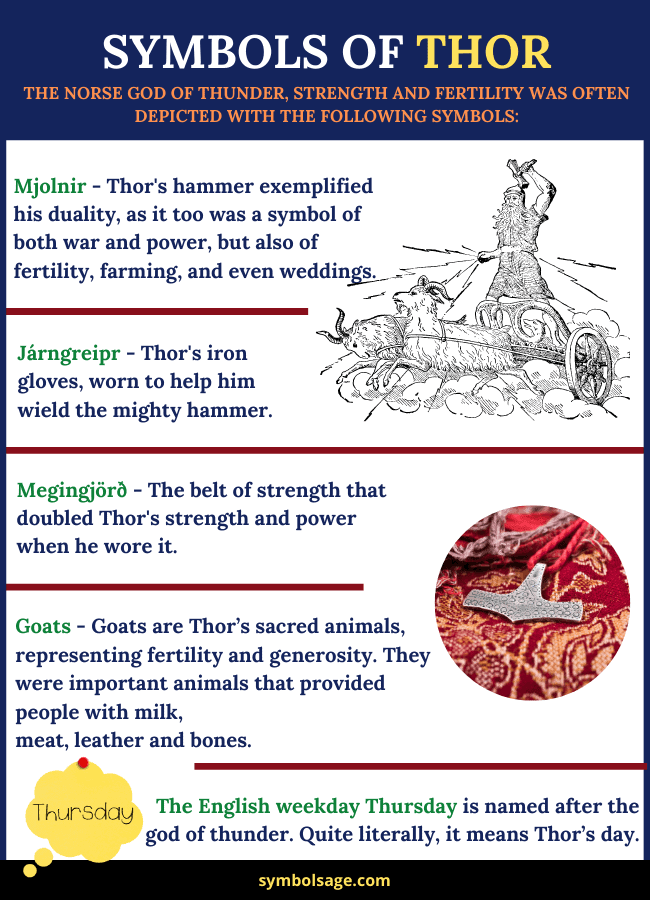
Thor’s three main items are his hammer, belt and iron gloves. According to the Prose Edda, these three are his most crucial possessions that further strengthend him.
- Mjolnir: Thor’s most popular symbol is his hammer, Mjolnir. In most depictions of him, he’s shown wielding the hammer, which identifies him. The hammer exemplified Thor’s duality, as it too was a symbol of both war and power, but also of fertility, farming, and even weddings.
- Megingjard: This refers to Thor’s belt of strength. When worn, this belt supposedly doubles Thor’s already impressive strength, making him almost invincible.
- Jarngreipr: This are the iron gloves worn by Thor to help him handle his powerful hammer. This could be because the handle of the hammer was short and therefore required more strength to weild it.
- Goats: Goats are Thor’s sacred animals, representing fertility and generosity. They were important animals that provided people with milk, meat, leather and bones. The Norse people believed that Thor flew through the skies on a chariot pulled by the giant goats Tanngrisnir and Tanngnjóstr – two rather unlucky goats as Thor used to eat them when he was hungry before resurrecting them so they could pull his chariot again.
- The English weekday Thursday is named after the god of thunder. Quite literally, it means Thor’s day.
Depiction of Thor in Movies and Pop Culture
If you’re familiar with the Thor character from the famous MCU movies and Marvel comics you’ll find the original god of thunder from Norse mythology both surprisingly familiar and fundamentally different.
Both characters are gods of thunder and lightning, both are incredibly strong, and both are models for the optimal male physique, bravery, and selflessness. However, while the movie Thor had to face many obstacles to embrace said selflessness, the Norse god has always been a stout defender of Asgard and the Norse people.
In fact, the first (2011) MCU Thor movie makes the clear distinction between the calm, wise, and collected Odin and his reckless, glory-hunting son Thor. In Norse mythology, that relationship is completely reversed – Odin is the battle-frenzied glory-hunting war god while his son Thor is a powerful but also calm, selfless, and reasonable warrior, and a protector of all Norse people.
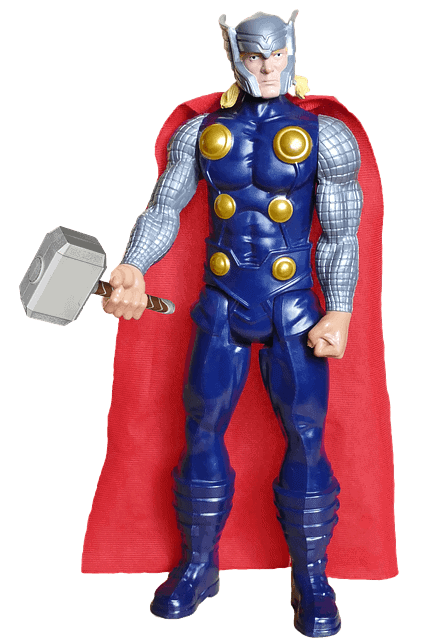
Of course, the MCU movies are but a drop in the bucket when it comes to cultural portrayals of the god of thunder. In the past few centuries, Thor has been featured in countless other movies, books, poems, songs, paintings, and video games.
There’s even a recently-discovered species of shrews native to the Democratic Republic of Congo called Thor’s hero shrew who were named after the Norse god because of a unique interlocking vertebrate around their waist which gives them impressive strength, similarly to Thor’s belt of strength Megingjörð.
Below is a list of the editor’s top picks featuring Thor’s statue.
Facts About Thor
Thor is the Norse god of thunder, strength, war and fertility.
Thor is the son of Odin and the giantess Jörd.
Thor is married to the goddess Sif.
Thor has several siblings on Odin’s side, including Baldr.
Thor travels in a chariot pulled by his two goats.
Thor is fated to die during Ragnarok as he battles the world serpent, Jörmungandr.
Thor is a Norse god, but there are often equivalents among Greek, Roman and Norse gods. The Greek equivalent for Thor would be Zeus.
Thor’s symbols include his hammer, his iron gloves, his belt of strength and goats.
Wrapping Up
Thor remains one of the most popular gods of the Norse pantheon. From pop culture, to a weekday name to the world of science, Thor’s influence is visible in today’s world. He continues to be seen as the paragon of strength, masculinity and power, with amulets associated with Thor popular even today.







